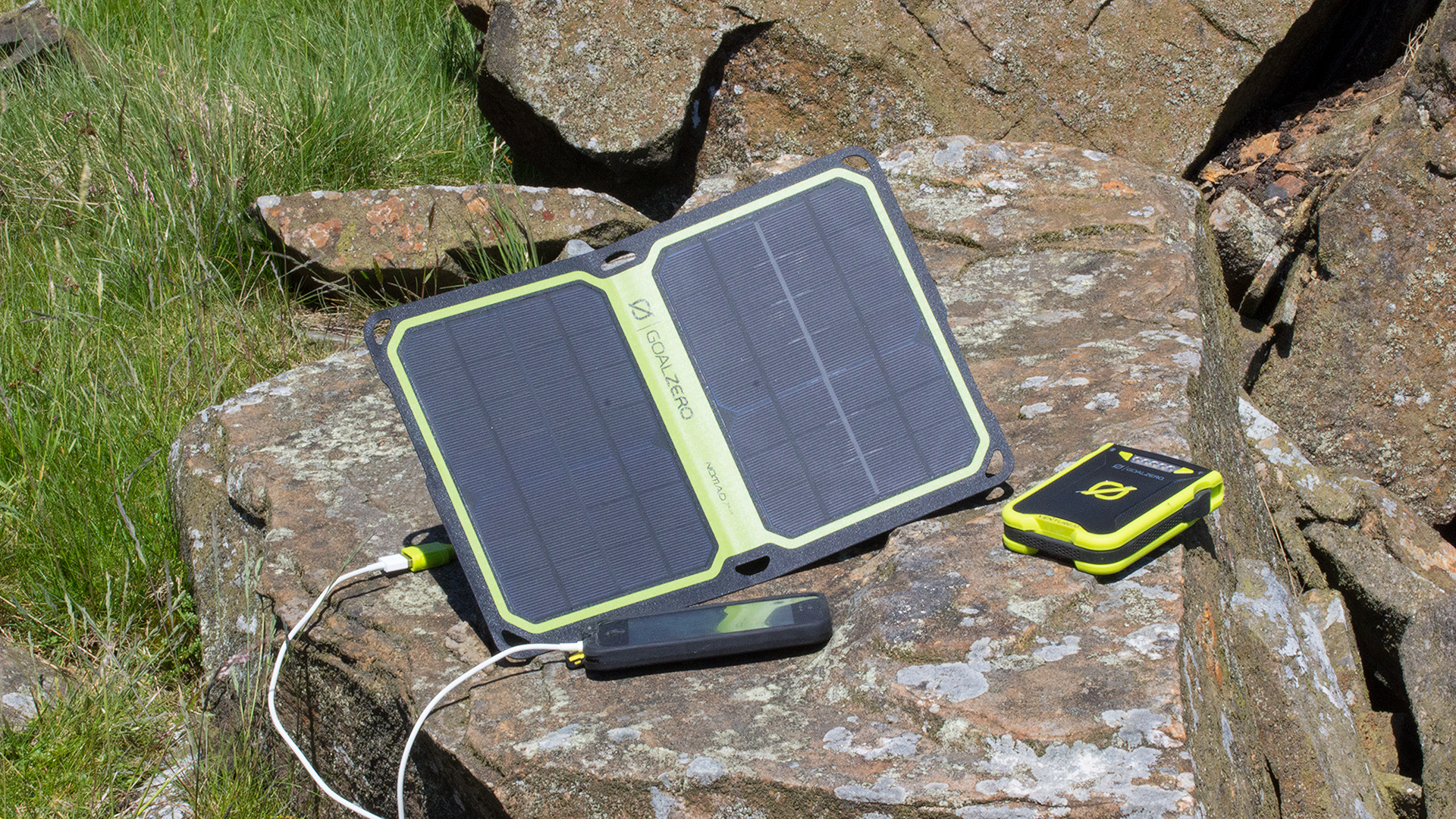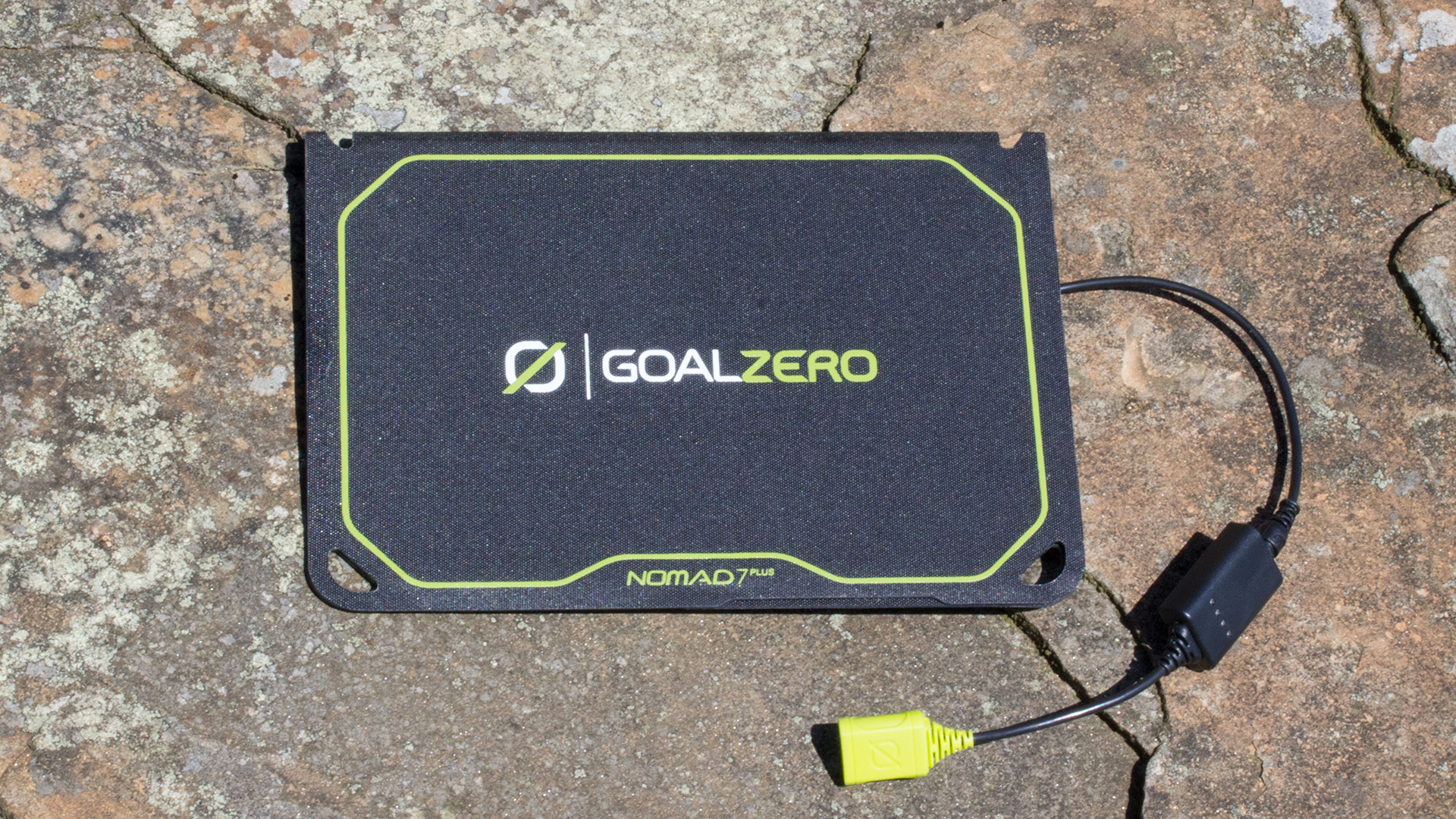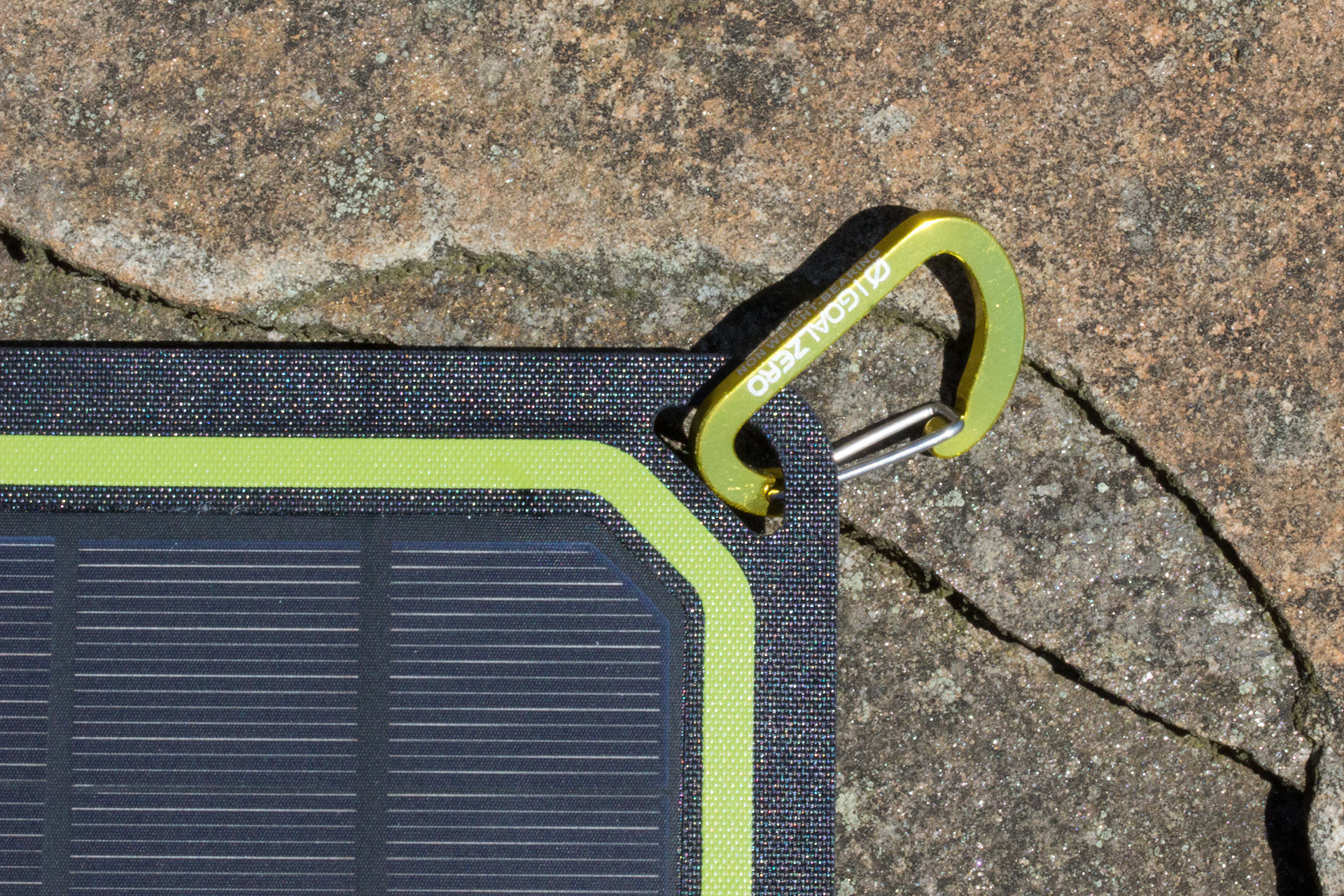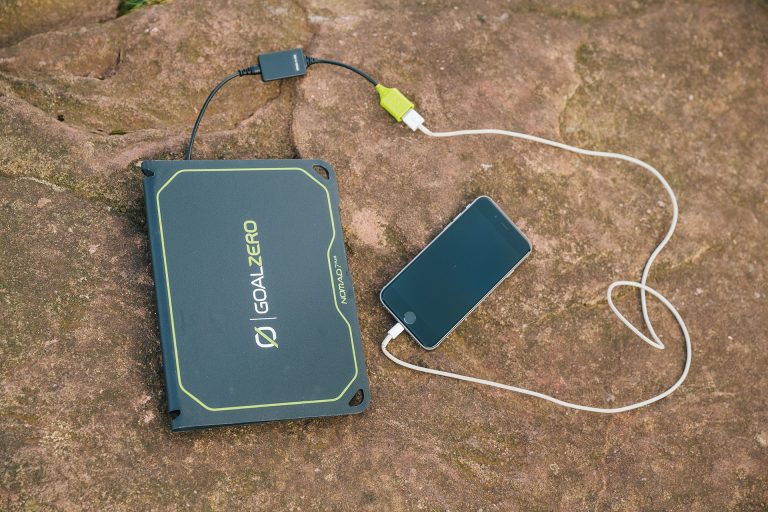We’ve always like Goal Zero’s portable power range including the venerable Nomad 7 solar panel, which has proven to be a reliable way of recharging small electrical gadgets in the outdoors – when the sun’s shining anyway.
New from the brand though, is an uprated lighter and more efficient version of the panel called the Nomad 7 Plus, which also features a cunning junction box which allows you to monitor power output from the panel and position it more efficiently.
The same tiny box also incorporates cunning electronics which restarts charging after an interruption due to clouds or stupidity and can tell the difference between a fully-charged device and one that needs more charging.
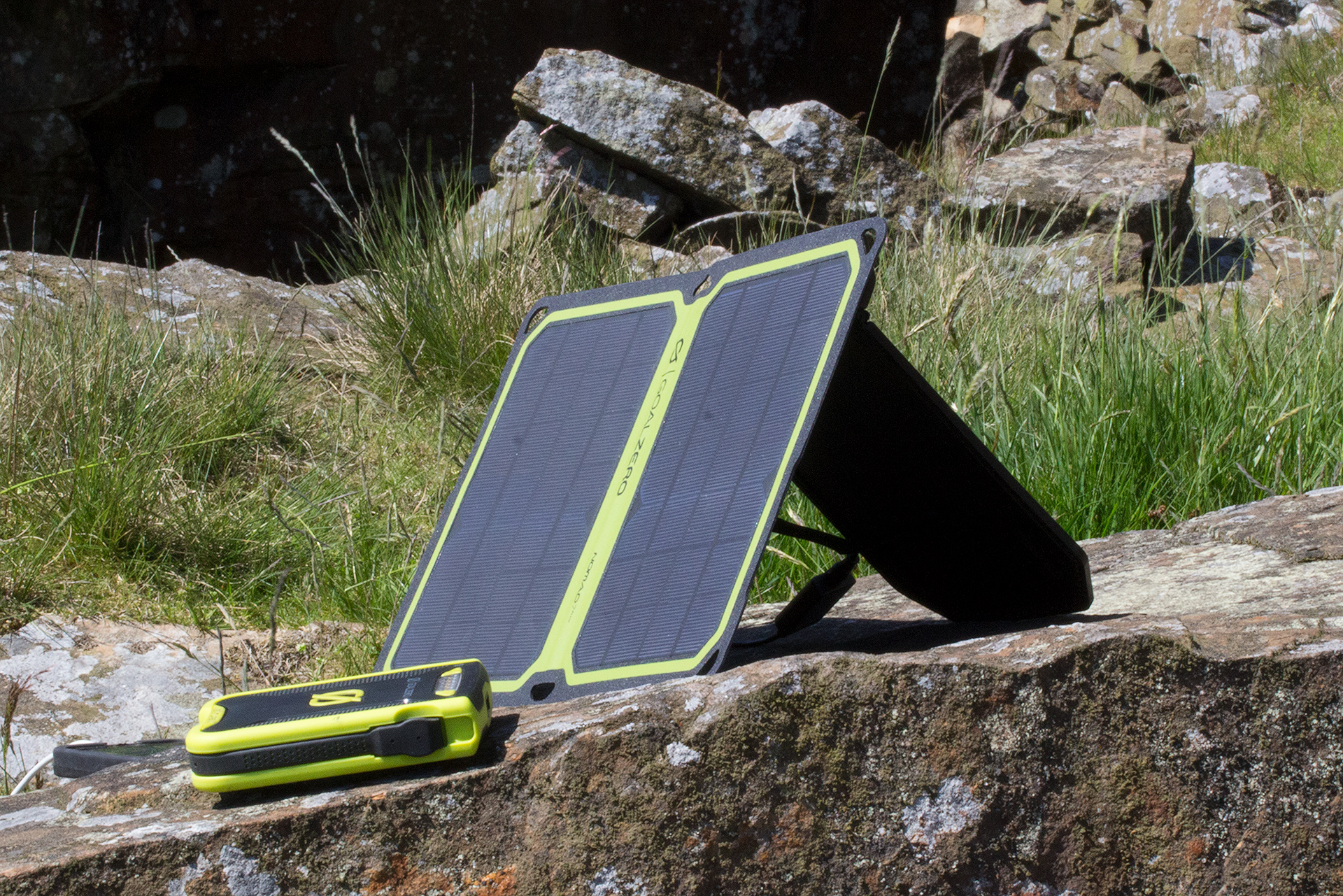
What’s The Difference?
Visually the new panel is flatter and matter compared to the glossy original thanks to next-generation monocrystalline solar cells. But it’s when you pick it up that you really notice the difference – the new Plus version is considerably lighter.
How much lighter? The original weighs 458 grammes on our digital scales, the new version is just 257 grammes and even if you attach the handy 116g kickstand support, it’s still only 374g all in.
It’s more efficient too on paper, the Plus’s USB output is 1.4A (7W max) while the plain Nomad 7 is pegged at 1A (5W max).
And finally, while the standard 7 has 12v, USB and bespoke plug output to match the Guide 10 rechargeable battery pack, the Plus has just a USB one attached to a small black box.
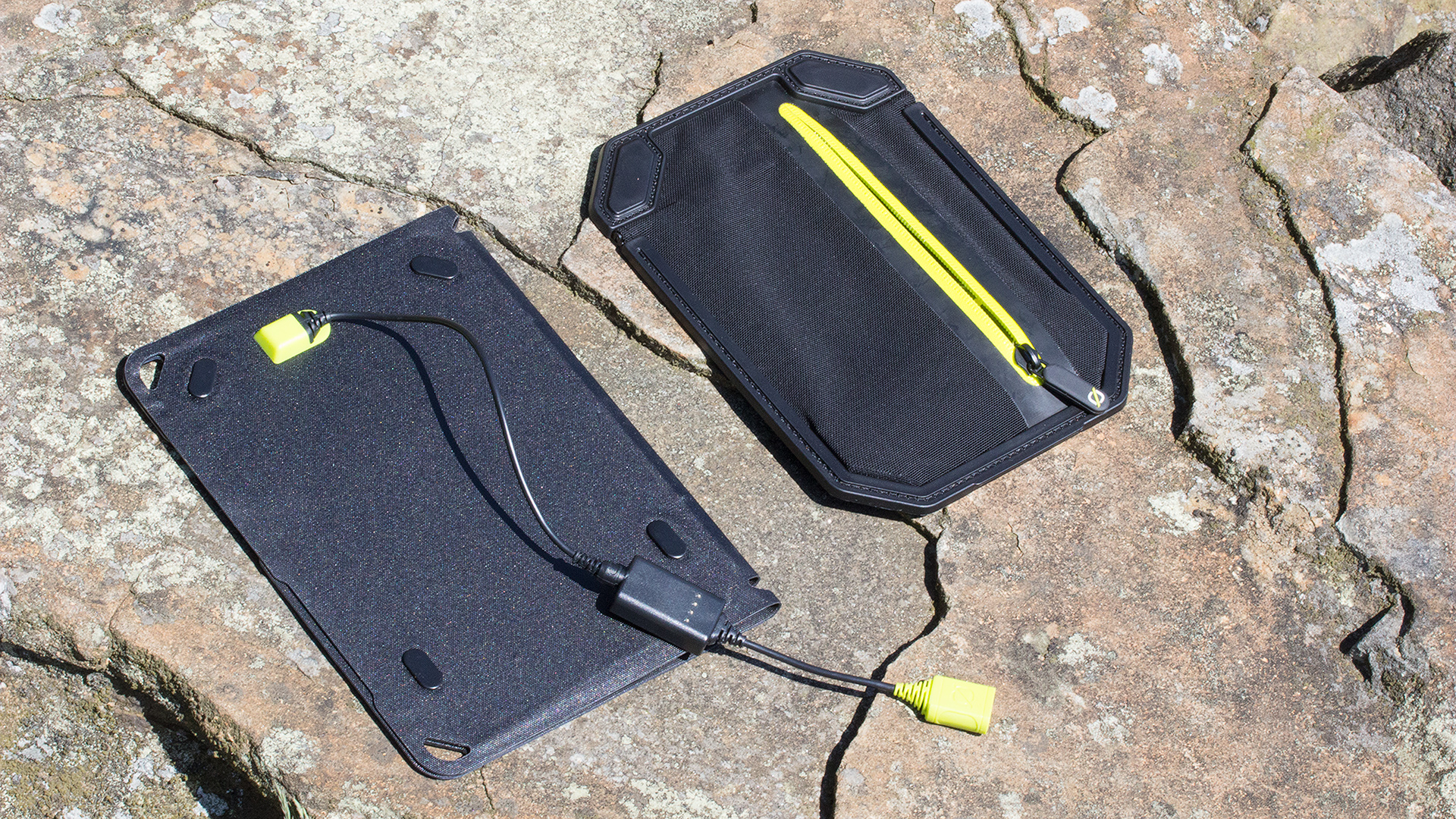
How Does It Work?
In short, better. Like the plain Nomad 7, it prefers bright, direct sunlight to make effective power, but it seems to perform more effectively in bright but overcast conditions. Where it really scores is when it does find bright sunlight.
Four blue LEDs help you align the panel for maximum efficiency. The more of them are lit up, the better the output. And then there’s the clever circuitry which re-connects when things do stop charging. We noticed that most with our finnicky iPhone.
With the original Nomad 7, it was touch and go whether it would charge directly from the panel in anything other than really bright light. Often it simply wouldn’t bother. With the 7 Plus, things are more reliable in low and variable light.
On days when the sun comes and goes, you can hear it buzz gently as it repeatedly reconnects after clouds pass over. And in direct light, it charges faster than before with no need for an intermediate battery pack to stabilise the flow.
In direct sunshine with 4 LEDs showing, the phone charged at a phenomenal rate, roughly on a par with a mains charger we reckon. That’s impressive and light years away from the disillusion born of small pocket chargers using less efficient solar cells.

Some Provisos
It may be great in strong, bright sunshine – for reference, we got four blue LEDs in the Peak District in late May on a bright, 25˚C afternoon with a carefully-aligned panel – but in less ideal light, charging slows down to a trickle, though it still works in surprisingly low, though direct light.
It doesn’t work at night, but you knew that, right. And while you can stick it on the back of your pack using the mini-carabiners provided, you need to be walking in the right direction, broadly away from the sun, so plan your routes accordingly… it works best at standstill where you can optimise position.

